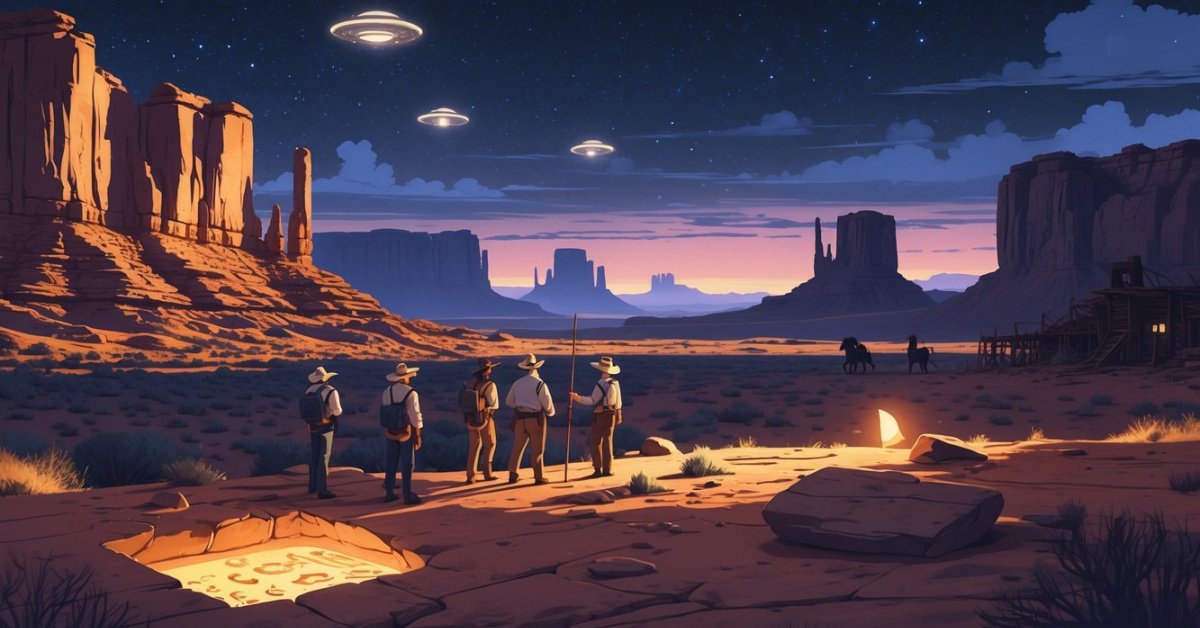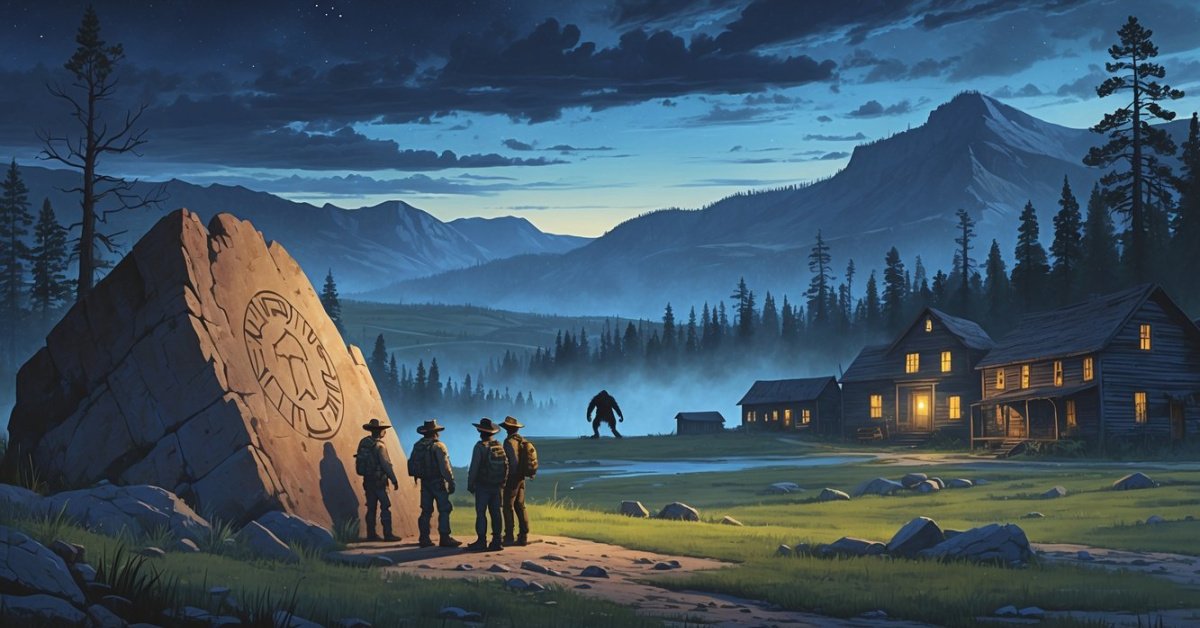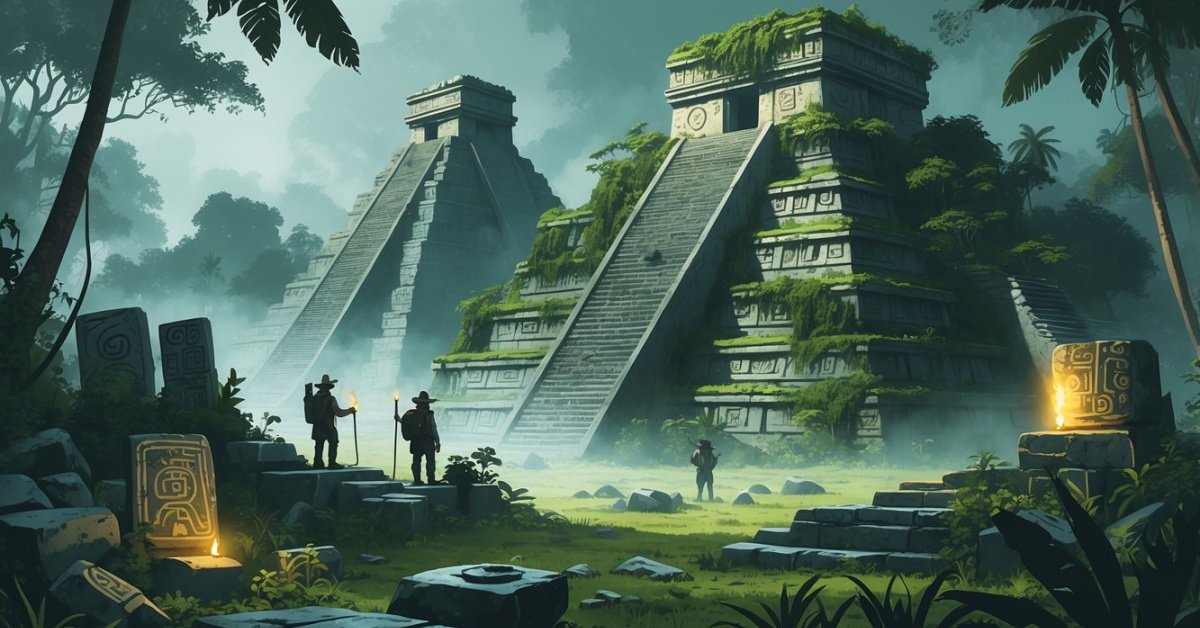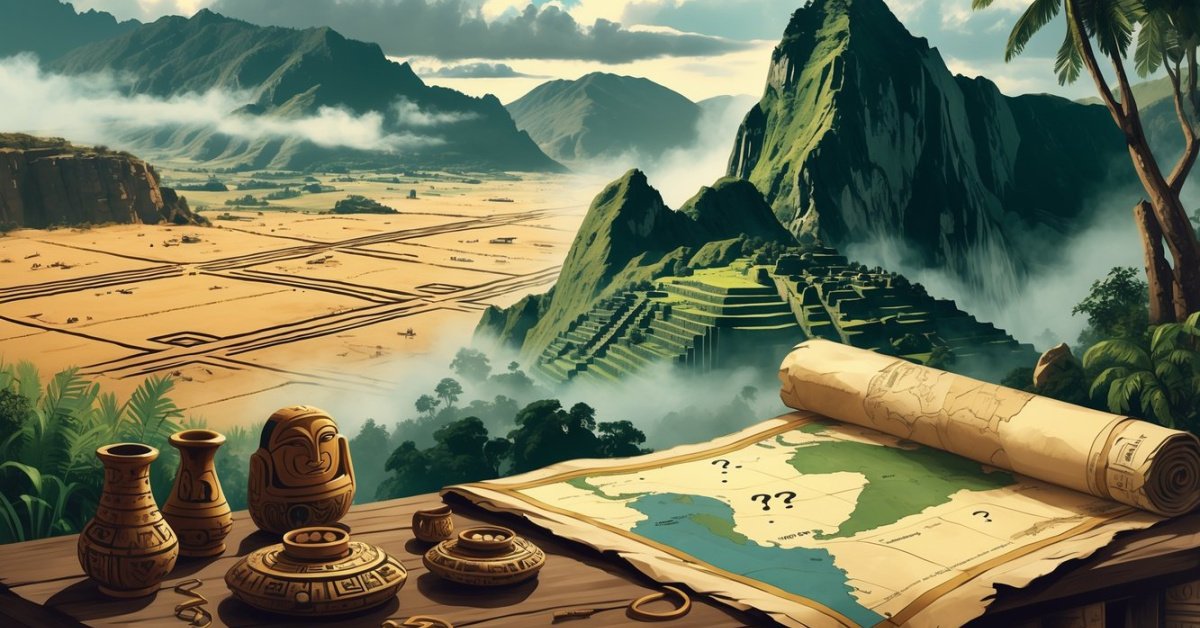Utah has a long history filled with ancient people, pioneers, and wild legends. Some stories have clear answers, but others are surrounded by confusion and wonder.
The biggest historical mysteries in Utah include tales of lost treasures, strange disappearances, and creatures that some say live in the deep lakes and high mountains.

People wonder what really happened to the Lost Rhoades Gold Mine and why some visitors to the state vanished without a trace. Stories about puzzling grave robberies, the Bear Lake Monster, and Utah’s mysterious monoliths keep both locals and visitors guessing about what is fact and what is myth.
The Disappearance of Susan Powell
Susan Powell’s case is one of Utah’s most enduring enigmas. Her sudden disappearance in 2009 left authorities searching for answers while her family and the public faced uncertainty.
Key Events Surrounding Susan Powell
Susan Powell was last seen on December 6, 2009, in West Valley City, Utah. She was a young mother who lived with her husband Joshua Powell and their two sons.
Joshua told police he took his boys camping in the middle of the night in freezing temperatures, leaving Susan at home. When he returned, she was gone.
Police found signs of concern inside the Powell home, including Susan’s purse, keys, and phone, all left behind. Friends and coworkers reported Susan missing when she failed to show up for work or daycare that day.
Joshua Powell quickly became a person of interest because of his unusual story and lack of cooperation. There was not enough evidence to charge him.
The search for Susan became a widely reported event, drawing national attention and public interest from many who followed the story of her disappearance.
Theories Behind Her Vanishing
Investigators and the public have discussed several theories about Susan Powell’s fate. Many believe she was the victim of foul play at home.
Suspicion mainly centered on her husband Joshua, due to his strange actions and inconsistencies in his statements to police. There was also tension in her marriage, and Susan reportedly documented troubling details in journals and emails.
Some theories suggest Joshua’s father, Steven Powell, could have been involved. Steven was later found guilty of voyeurism in a separate case, adding more suspicion to the family’s background.
Another theory suggests Susan may have left on her own, but most evidence points against this. Law enforcement continues to consider this case an unsolved mystery, with no conclusive answer about what happened that night.
Ongoing Investigations
Years of searching and investigation have not solved Susan Powell’s case. Police have followed leads, conducted searches in Utah and other states, and used cadaver dogs and forensic tools.
No trace of Susan has ever been found. In 2012, tragedy struck again when Joshua Powell killed himself and their two sons in a house fire during a custody visit.
This event ended any chance of getting more information from Joshua about Susan’s disappearance. The case remains open, though cold, with new tips still being reported on occasion.
Authorities and Susan’s family continue to hope for answers. Her story is still featured in news reports, documentaries, and podcasts like “Cold” to raise awareness and seek justice.
Unsolved Case of Elizabeth Salgado
Elizabeth Salgado’s case is one of the most talked-about unsolved mysteries in Utah. She vanished in daylight, and years later, her remains were found far from where she disappeared.
Timeline of Events
- April 16, 2015: Elizabeth Salgado, a 26-year-old from Mexico, was last seen leaving the Nomen Global Language Center in Provo, Utah.
- She walked 18 blocks toward her apartment, but she never arrived.
This triggered alarm among her family, who she spoke with often. For three years, her family and police searched for her.
In May 2018, her skeletal remains were discovered in Hobble Creek Canyon, more than a dozen miles away from where she was last seen. The cause of death was not clear, and no suspects were named.
The case is still open, with her family and investigators hoping for new leads. To read more about the case background, see the timeline of Elizabeth Salgado’s story.
Major Leads and Dead Ends
Early leads included questioning people who knew Elizabeth and checking surveillance footage, but nothing solid was found. Investigators went through her phone records and social media, yet there were no helpful clues.
Her remains were found off the main road in an isolated canyon. This discovery raised more questions since it was far from her usual path home from school.
There was no sign of who brought her there or how she died. Authorities and private investigators have continued their work, but the case remains a baffling mystery.
Neither police nor her family have given up searching for answers to her disappearance.
Legend of the Lost Rhoades Gold Mine
Stories of the Lost Rhoades Gold Mine are some of the most famous in Utah history. The tale mixes adventure, lost treasure, faith, and mystery.
This story has drawn interest from gold seekers and storytellers for over a century.
Origins of the Legend
The legend of the Lost Rhoades Gold Mine goes back to the mid-1800s, during a period of settlement and conflict in Utah. Many believe the mine is hidden deep in the Uinta Mountains and was rumored to be a source of extremely pure gold.
According to old stories, the Ute tribe and possibly Spanish miners knew about the mine long before settlers arrived. These early tales poke at ideas of secret riches that once supplied royalty or empires with gold.
Some claim the mine contributed to Aztec treasures or was linked to the Spanish search for the legendary Seven Cities of Cibola. This mix of native, Spanish, and settler stories turned the Rhoades mine into a symbol of lost treasures and mystery in Utah folklore.
Many details remain unproven and are debated by researchers and adventurers. For more information on these tales, see the overview at Lost Rhoades Mine – Wikipedia.
Thomas Rhoades’ Expeditions
Thomas Rhoades was a trusted early Mormon settler and a key figure in the mine’s story. According to legend, he gained knowledge of the mine either from Ute tribal chiefs or by being appointed by Brigham Young as a trusted messenger to access it.
People say Rhoades made several secret trips into the Uintas. He was known to come back with gold, but he never shared the exact location.
The amount and quality of the gold amazed many and led to more rumors about the mine’s importance. His actions fueled ongoing treasure hunts and created more theories about how he found and protected the location.
In some family accounts, Rhoades and his son Caleb worked several mines and found not only gold but also valuable “black minerals” (coal) on church property. See more background at Kamas Valley History Group.
Search Efforts Over the Years
The search for the Lost Rhoades Gold Mine has lasted for generations in Utah. Prospectors, historians, and curious locals have tried to retrace the steps of Thomas Rhoades, using clues from maps, family stories, and folklore.
The rough geography of the Uinta Mountains, with its dense forests and rugged trails, makes searching difficult and risky. Over the years, many claim to have come close, while others guard their own “secret” maps and supposed leads.
These efforts continue today with new treasure hunters hoping to solve the mystery. Some local tales even talk about hidden gold bars and strange happenings connected to the search.
You can read about the continued search in Utah Stories.
Connection to the Church of Jesus Christ of Latter-day Saints
The Church of Jesus Christ of Latter-day Saints played an important role in the Rhoades mine story. Historical accounts suggest that Brigham Young became involved after he learned about the mine from the Ute chiefs.
Some legends claim he chose Thomas Rhoades as a special messenger to gain access for the benefit of the church. Gold from the mines may have been used for church needs and helped support early settlements in Utah.
Family records and local writers also point out that Rhoades and his family were major tithe payers, possibly because of their mining gains. The connection between lost treasures, faith, and early Utah history makes the legend even more interesting.
Details can be found in Deseret News.
The Wild Bunch and Butch Cassidy’s Hidden Loot
Few stories from Utah’s past create as much curiosity as the lost treasures linked to Butch Cassidy, Sundance Kid, and their Wild Bunch gang. Their quick robberies, daring escapes, and rumors of hidden loot continue to fascinate history fans and treasure hunters.
Role of Butch Cassidy and Sundance Kid
Butch Cassidy, born Robert Leroy Parker, was known for his charm even while living outside the law. He led the Wild Bunch gang and built a reputation for planning robberies that avoided unnecessary violence.
Sundance Kid, his trusted partner, was skilled with horses and firearms. Together, they were central figures in the gang’s operations.
Their leadership made the Wild Bunch one of the most recognizable outlaw groups of the Old West. The two outlaws worked as a team, making use of hideouts like the remote Hole-in-the-Wall in Wyoming.
Their friendship and loyalty played a big part in pulling off successful robberies and escaping lawmen across state lines.
Infamous Heists
The Wild Bunch became famous for pulling off a series of high-profile bank and train robberies. One stand-out crime occurred in 1897 at Castle Gate, Utah, when Cassidy and fellow gang member Elzy Lay robbed the Pleasant Valley Coal Company payroll.
They escaped with about $1,000 in silver coins during broad daylight. The Wild Bunch would often split up after a job and change their hideouts to avoid capture, making it even harder for law enforcement to track them.
Many of their crimes, and how they used their loot, are still discussed today by historians and locals alike. Learn more about their robberies at this detailed article on the Castle Gate robbery.
Rumors of Buried Treasure
Even today, people talk about the Wild Bunch’s stolen money hidden in the hills of Utah. After the Castle Gate heist, the payroll was never recovered, sparking stories about lost silver coins still waiting to be found.
Some believe the gang hid their treasures in secret places before fleeing. Others think they used natural features for hiding spots.
Treasure hunters have searched old camps, caves, and remote canyons. The excitement grows as people try to trace the gang’s movements and piece together clues about missing loot.
Sites around Castle Gate have become popular for those hoping to find a piece of history linked to Butch Cassidy’s lost treasures.
Utah Monolith and Alien Theories
A shiny metal monolith suddenly appeared in Utah and grabbed attention worldwide. Questions about its origin, possible ties to aliens, and public reactions made this one of the state’s most talked-about enigmas.
Discovery in the Salt Lake Valley
In November 2020, wildlife officials found a tall, three-sided metal structure in a remote Utah desert area near the Salt Lake Valley. The monolith stood about 10 to 12 feet tall and had a metallic surface that caught the sunlight.
Someone placed it in a red rock crevice, making it hard to spot and even harder to explain. No markings or signs revealed how it got there.
The remote location and polished look sparked curiosity. Local officials kept its exact coordinates secret at first, but news spread quickly online.
Adventure seekers tracked it down and shared photos.
Speculations of Alien Involvement
Some people wondered if aliens created the Utah monolith. Its mysterious arrival and sharp, geometric design reminded many of scenes from science fiction movies, especially 2001: A Space Odyssey.
Experts pointed out there was no real evidence for the alien theory. Scientists and art critics suggested it was likely a piece of modern art meant to spark imagination or make a statement.
A CNN report explained that the monolith’s material and construction closely matched human-made objects. This made visitors from another planet an unlikely explanation.
Despite these facts, the mystery and remote setting fueled alien theories online.
Public Reactions and Media Coverage
Word of the monolith spread quickly in Utah and around the world. Social media filled with photos and videos from explorers who made the trek to see it.
Many joked that 2020 finally had proof of aliens or that the monolith was a message to humankind. Traditional news outlets, including NBC News, covered theories about artists, pranksters, or movie fans being behind it.
The object’s removal only deepened the mystery, keeping people and the media interested for weeks.
Ancient Enigmas: Possible Atlantis Connections

Ancient stories about mysterious lands have led many people to search for connections between Utah’s past and legends like Atlantis. Researchers compare myths and archaeological evidence to find links to ancient civilizations such as the Minoans.
Comparisons to Atlantis Myths
The Atlantis story, first shared by Plato, describes an advanced society that vanished after a disaster. Some people wonder if Utah holds any relics or clues tied to these Atlantis myths.
Certain Native American tales talk about lost cities or sunken lands, which sound similar to Atlantis stories. Experts note these legends are more likely rooted in local history and natural events.
Although some theories suggest connections between Atlantis and places in South America, there is no solid evidence showing Utah has direct ties to the lost world. Most archaeologists focus on physical evidence rather than myths alone.
| Atlantis Story Element | Similarity in Utah | Evidence |
|---|---|---|
| Advanced Lost Civilization | Native American tales | Story only |
| Sunken/Vanished Lands | Lake-related legends | No artifacts |
| Sudden Disaster | Ancient floods, quakes | Some records |
Exploring Minoan Civilization Links
The Minoan civilization, located on Crete in the Mediterranean, is often linked to Atlantis because both vanished suddenly. Some researchers look for signs of contact between the Minoans and ancient peoples in the Americas, including Utah.
These ideas come from comparing artifacts and building styles. Archaeologists found that the ziggurat-like mounds in Utah are very different from Minoan palaces.
The Minoans were known for unique art, writing, and seafaring, but there is no sign that they reached North or South America. No reliable evidence connects Minoan civilization to Utah’s ancient history.
For a closer look at these kinds of theories, visit this page on Atlantean myths and archaeological speculation.
The Brigham Young Mysteries

Brigham Young played a key role in Utah’s early settlement and the history of the Church of Jesus Christ of Latter-day Saints. Many events from his time remain the subject of debate and mystery, especially about his decisions and their lasting impact.
Unanswered Questions of Brigham Young’s Era
Several mysteries still surround Brigham Young’s leadership. He served as both President of the Church of Jesus Christ of Latter-day Saints and the first territorial governor of Utah.
Some of his actions as a leader raise questions, especially those related to controversial events. One mystery involves Brigham Young’s connection to the Mountain Meadows Massacre.
The massacre happened in 1857, when a group of emigrants was attacked in southern Utah. Historians still debate whether Young ordered, approved, or even knew about the attack before it happened.
Another issue is how he balanced being both a religious and political leader. His dual roles often led to conflicts with the federal government and shaped early Utah laws.
The exact details of his involvement in certain decisions remain unclear for researchers today.
Influence on Regional History
Brigham Young shaped Utah’s history in many ways. He led Mormon pioneers to the Salt Lake Valley in 1847 and declared, “this is the right place.”
His leadership helped establish Salt Lake City and other settlements in the region. Young’s policies also affected relationships between settlers, Native Americans, and outsiders.
He encouraged building irrigation, schools, and churches, which set up Utah’s social and economic structure. Some praise his vision, while others point to the lasting controversies from his time as governor and church president.
Questions remain about the handling of property, land, and disputes during Young’s leadership. Some still wonder about burial sites and personal secrets connected to early church leaders, as explored in this article.
Hobble Creek Canyon’s Unexplained Incidents
Hobble Creek Canyon is well known for its beautiful scenery. It also has a mysterious side.
Stories here have attracted attention because of unsettling disappearances and rare animal sightings. Many questions remain unanswered.
Historic Disappearances
One of the most talked-about cases in Hobble Creek Canyon involves Elizabeth Salgado. In 2015, she vanished while walking home in Provo, Utah.
For three years, searches brought no results. Her skeletal remains turned up over a dozen miles away in a remote part of Hobble Creek Canyon.
Local authorities said the spot was off the main trails and hard to find. This led to even more confusion, since nobody saw or heard anything suspicious when she disappeared.
The case left Elizabeth’s family and investigators without answers. The disappearance stands out because no clear evidence or suspects were ever identified.
It remains one of Utah’s most haunting cold cases.
Wildlife Oddities
Hobble Creek Canyon is not just known for strange disappearances. Hikers and residents have long reported seeing rare animals in the area.
Sightings include mountain lions, unusually large deer herds, and sometimes animals that do not usually appear in Utah, such as mysterious birds with unique markings. Some locals have listed animal sightings in journals or shared stories at community gatherings.
A few reports mention deer behaving oddly, moving in tight circles or appearing in meadows after storms. This pattern of odd wildlife behavior has made the canyon a place of curiosity for nature lovers and researchers.
The unexplained mix of local and unexpected animals continues to raise questions about the ecosystem and what draws them to this hidden canyon.
Utah’s Lost Mines and Buried Treasures
Utah is famous for its rugged land and wild past. Its history is packed with stories of hidden gold mines, secret stashes, and outlaws hiding riches.
Famous Lost Gold Mines
Many people in Utah have heard of the Lost Rhoades Gold Mine. This legend claims that Thomas Rhoades found secret gold in the Uinta Mountains, hidden by Native Americans.
Despite many searches, no one has ever found the exact spot. Another big mystery is Montezuma’s Treasure.
Some believe Aztec gold was hidden by fleeing Aztecs, possibly in southern Utah. Explorers have spent years searching caves and canyons for any sign of this lost fortune.
Other treasures said to be hidden in Utah include:
- Spanish gold buried by explorers
- Loot from the Wild Bunch gang
- Caches of precious metals from old mining camps
These legends bring treasure seekers every year, hoping to solve Utah’s top mysteries.
Modern Treasure Hunters
Today, modern treasure hunters use metal detectors, old maps, and even drones. They search places like the Uintas, Henry Mountains, and remote desert canyons.
Some join local clubs or online forums to share tips and search together. A few finds do happen—coins, mining tools, or even bits of gold—but really big discoveries are rare.
Popular spots include:
- Governor’s Cave in the Uintas
- Legendary sites near Spanish Fork
- Old mining camps in the west
People are drawn to these adventures for the thrill of hunting lost treasures in Utah. The mix of real history and legend keeps their hope alive.
Unexplained Mysteries from the Old West
Utah’s Old West history is full of mysterious stories that draw in adventurers and historians. Stories about outlaws, gold mines, and unexplained vanishings still fuel curiosity today.
Infamous Outlaw Legends
Utah’s landscape became a hideout for some of the West’s most notorious outlaws. Figures like Butch Cassidy and the Wild Bunch used rugged areas as bases and evaded capture for years.
One legend involves the lost Rhoades Gold Mine. People say early settlers or outlaws left a stash of hidden treasure there.
Many have searched for the mine, but no one has found its location. Tales of shootouts and train robberies still capture the imagination of treasure hunters and history fans.
Some believe the secrets behind these legends lie deep in Utah’s mountains or deserts. These stories remain unsolved and continue to fascinate those interested in Utah’s top mysteries and lost treasures.
Famous Disappearances
During the Old West days, people sometimes vanished without a trace in Utah. Mystery surrounds cases of settlers, travelers, and even whole wagon trains going missing.
One puzzling disappearance involved a stagecoach that never reached its destination. Searchers found no passengers, no driver, and no clues.
These unexplained vanishings have become a part of Utah’s unsolved history. Many still wonder what dangers might have lurked in remote desert areas.
Even today, people share theories about these historic disappearances in books and lists of unsettling unsolved mysteries from the Old West. Some still search for answers, hoping to solve cases that are more than a hundred years old.




